FieldWeb Blog.
Get the knowledge and inspiration you need to run your home and commercial service business better.
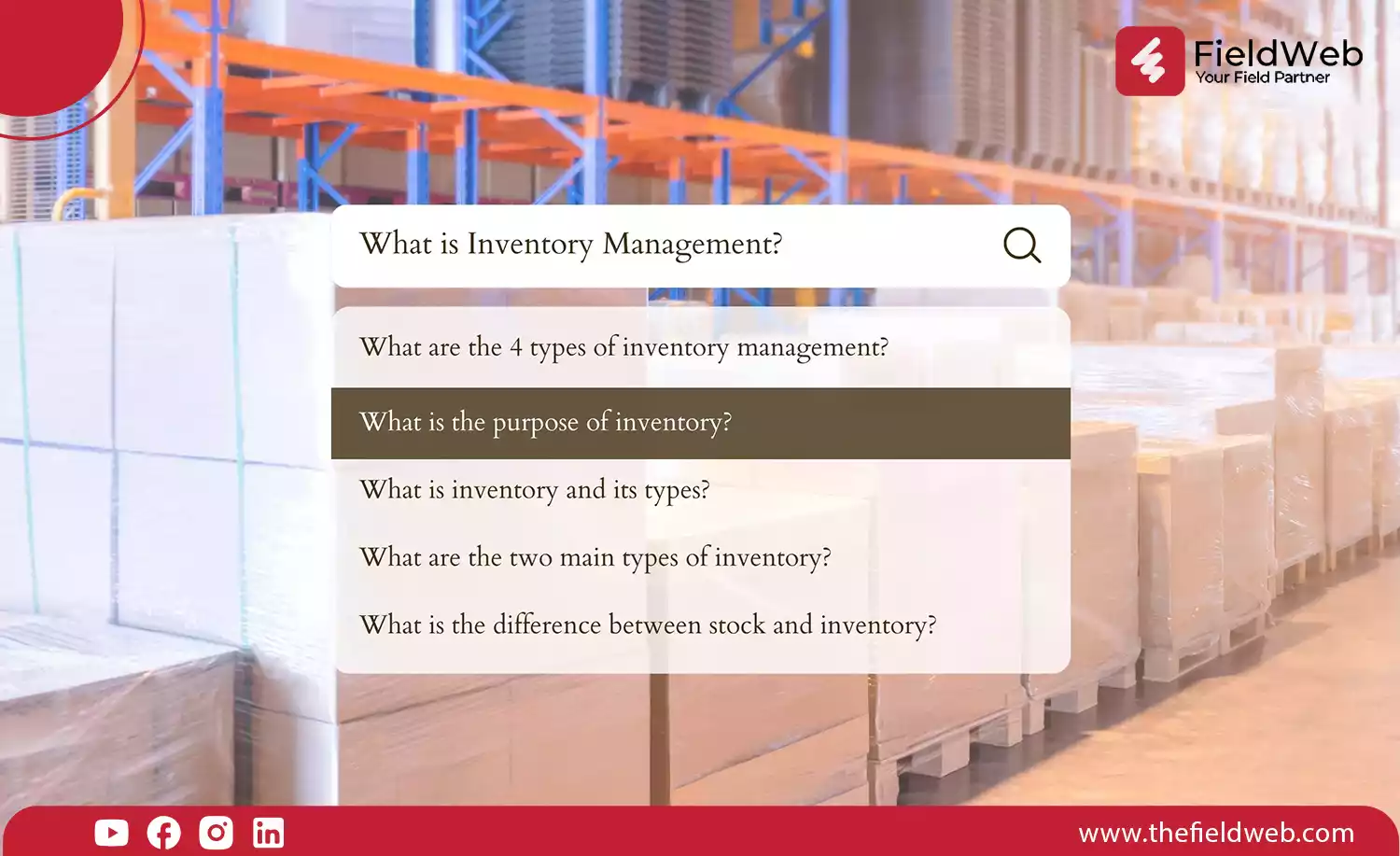
Plumbing, HVAC, pest control and electrical services, for example, rely heavily on inventory to complete their tasks. These businesses cannot complete their work or meet the needs of their customers unless they have the proper parts and materials. As a result, effective inventory management is critical for ensuring that field service businesses can operate efficiently and meet customer demands.
In this blog post, we will discuss the importance of inventory management for field service businesses, the benefits of effective inventory management, and some best practices for inventory management.
Field service companies face a number of unique challenges that necessitate effective inventory management. As an example:
Effective inventory management can help field service businesses overcome these challenges and improve their operations. For example:
Effective inventory management can provide a number of benefits for field service businesses, including:
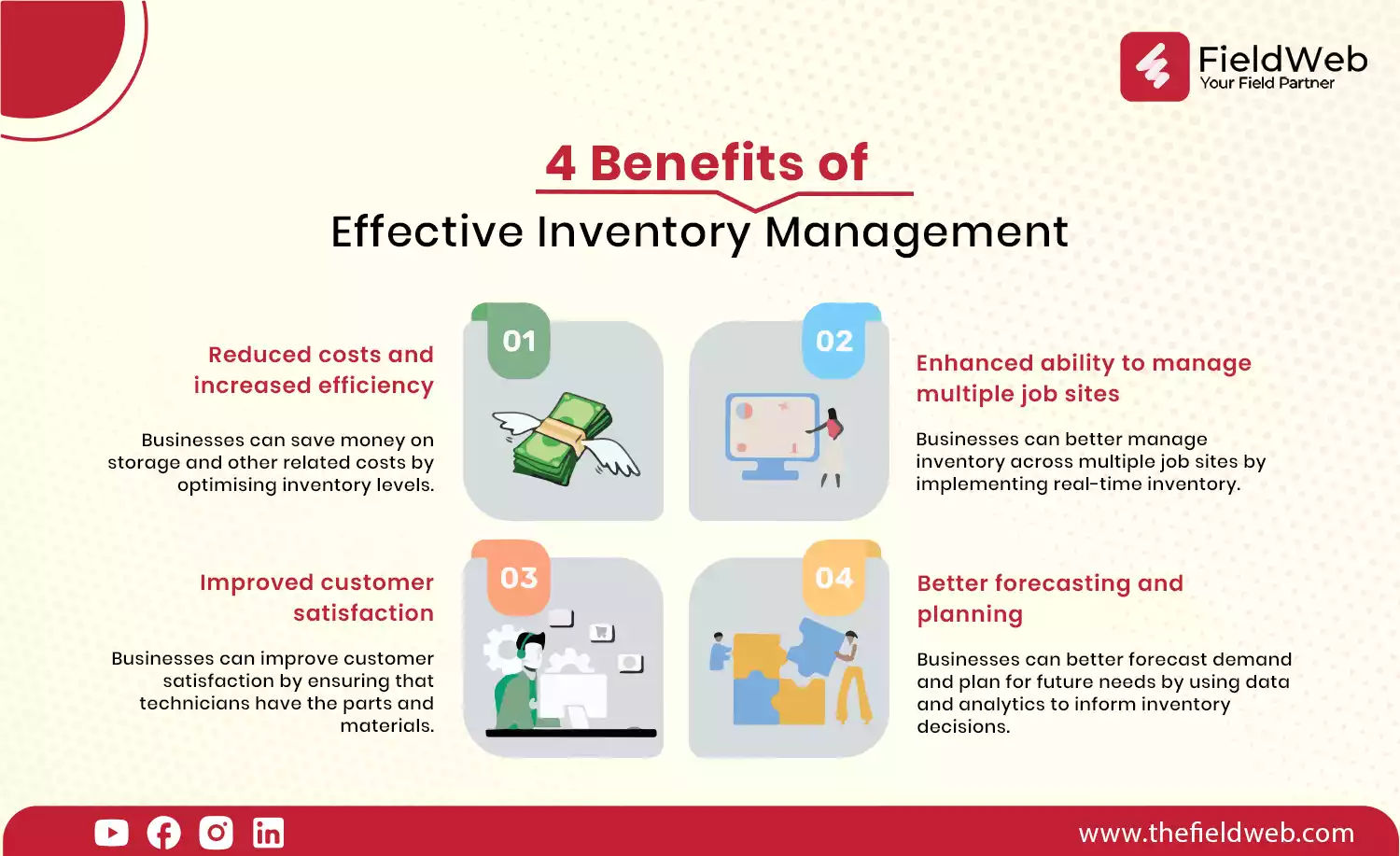
1. Reduced costs and increased efficiency: Businesses can save money on storage and other related costs by optimising inventory levels and reducing excess inventory. Businesses can also improve efficiency and reduce downtime by ensuring that technicians always have access to the parts and materials they require.
2. Improved customer satisfaction: Businesses can improve customer satisfaction by ensuring that technicians have the parts and materials they need to complete their work quickly and effectively. When service requests are completed quickly and without delay, customers are more likely to be satisfied.
3. Enhanced ability to manage multiple job sites: Businesses can better manage inventory across multiple job sites by implementing real-time inventory tracking systems and utilising mobile inventory management tools. This can help to reduce lost inventory and ensure that technicians, no matter where they are, have the parts and materials they need to complete their work.
4. Better forecasting and planning: Businesses can better forecast demand and plan for future needs by using data and analytics to inform inventory decisions. This can help businesses ensure that they are always ready to meet customer demand, even during peak periods.
To effectively manage inventory in a field service business, consider the following best practices:
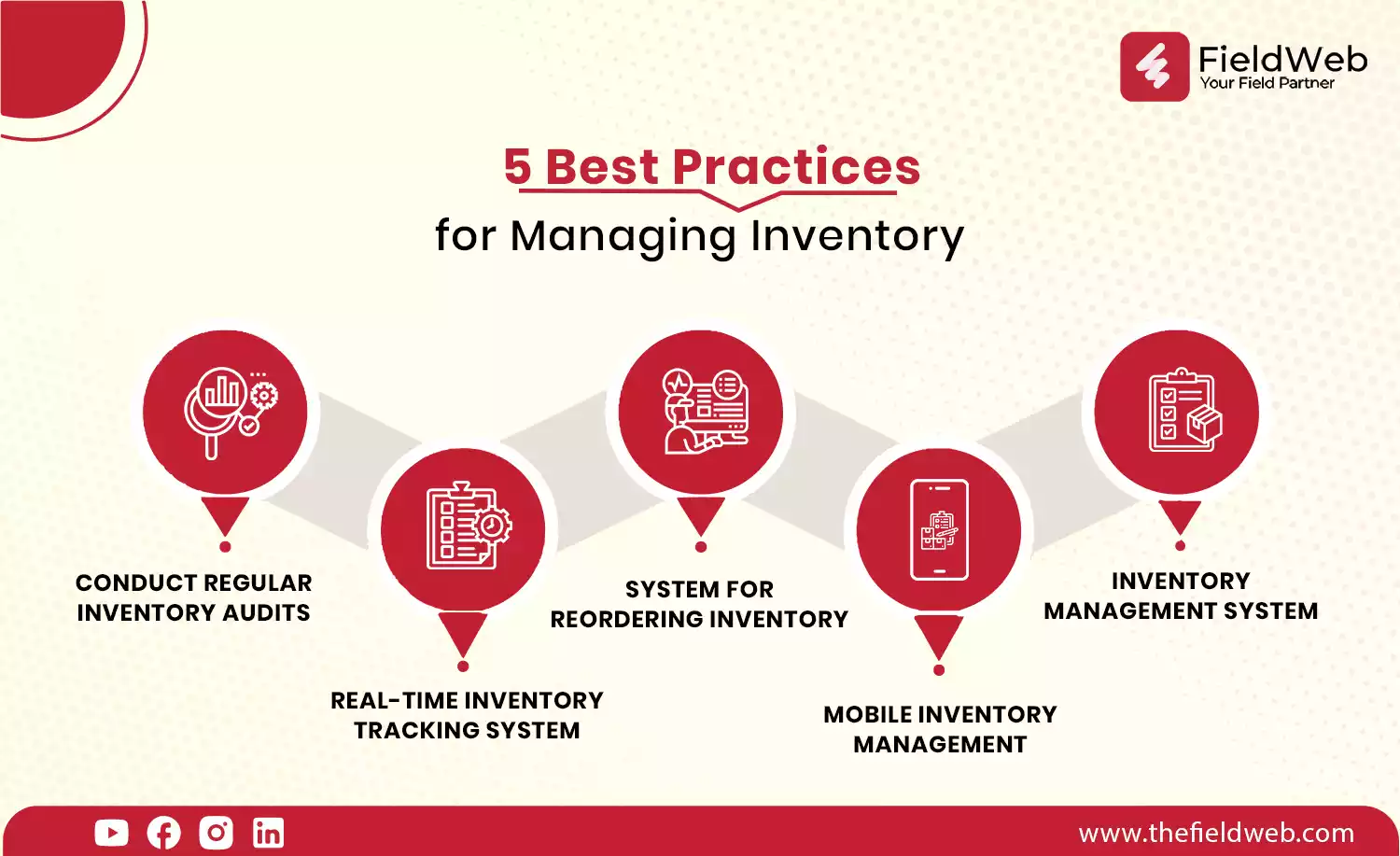
1. Conduct regular inventory audits: Inventory audits on a regular basis can assist businesses in identifying excess inventory and ensuring that inventory levels are accurate. This can assist in reducing waste and saving money on storage costs.
2. Implement a real-time inventory tracking system: Businesses can use real-time inventory tracking systems to monitor inventory levels and ensure that technicians always have access to the parts and materials they require. This can help to increase efficiency and decrease downtime because technicians won't have to waste time looking for the right parts.
3. Establish an efficient system for reordering inventory: Creating a system for reordering inventory can help businesses avoid running out of critical parts and materials. This can aid in reducing downtime and increasing customer satisfaction.
4. Utilise mobile inventory management tools: Mobile inventory management tools can assist businesses in tracking inventory across multiple job sites and ensuring that technicians have constant access to the parts and materials they require. This can aid in increasing efficiency and decreasing downtime.
5. Choose the right inventory management system: Choosing the right inventory management system is critical for ensuring that businesses can manage their inventory effectively. Inventory management systems vary in complexity, ranging from simple spreadsheets to complex software programmes. Businesses should select a system that meets their requirements and is simple to use.
Field service businesses face a number of unique challenges when it comes to managing inventory. Some of the most common inventory management challenges faced by field service businesses include:
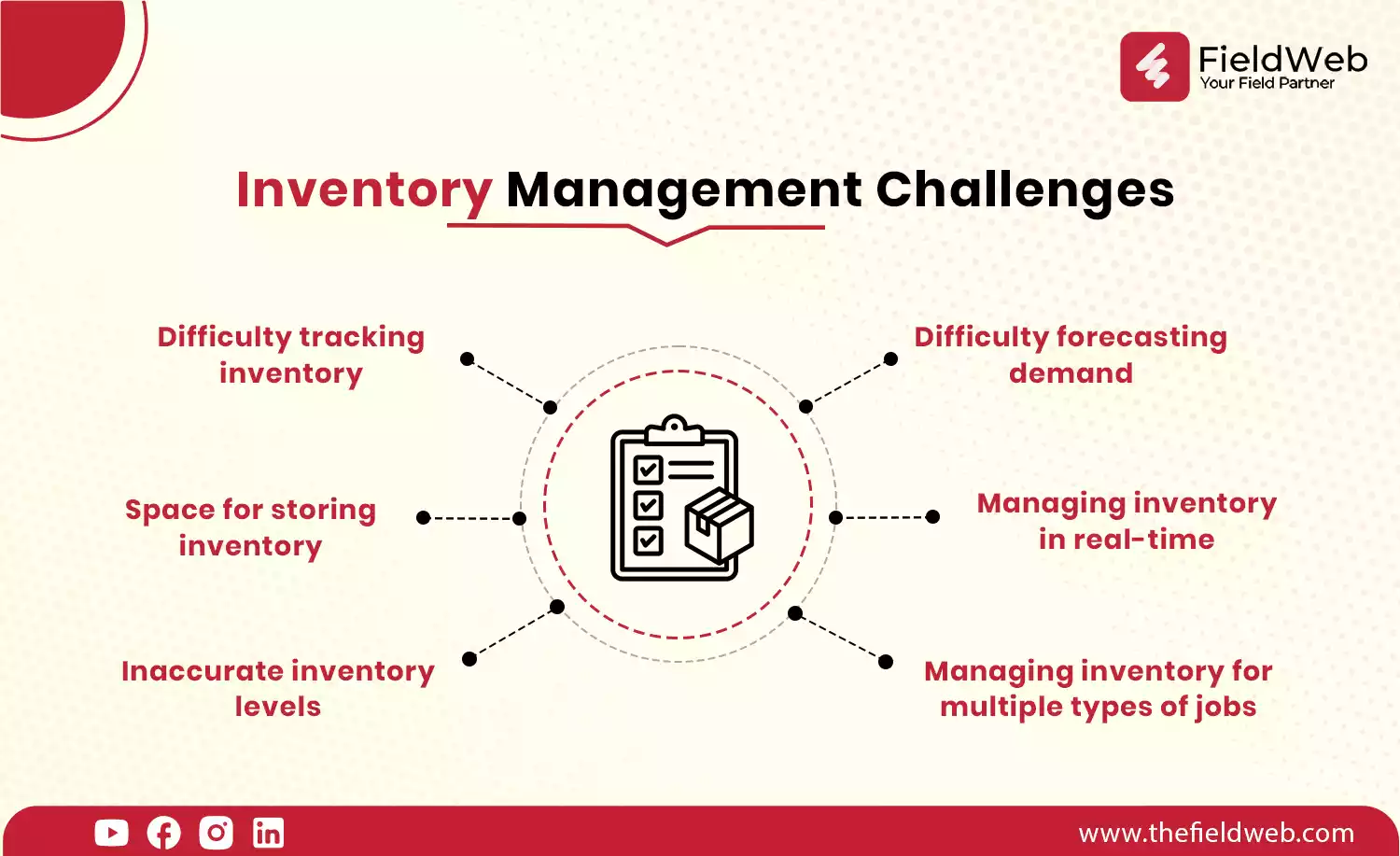
1. Difficulty tracking inventory across multiple job sites: Field service technicians frequently work on multiple job sites, making inventory management difficult. Businesses may experience lost or misplaced inventory if an efficient system for tracking inventory across multiple locations is not in place, which can lead to delays and increased costs.
2. Limited space for storing inventory: Field service businesses frequently operate from service vehicles or small storage facilities, limiting the amount of inventory they can hold. This can make it difficult to keep the right parts and materials on hand, resulting in delays and increased costs if businesses are forced to reorder parts on a regular basis.
3. Inaccurate inventory levels: Businesses may be unaware of how much inventory they have on hand if they do not have an accurate system for tracking inventory levels. This can result in overstocking, which can squander capital and take up valuable storage space, or understocking, which can cause delays and cost increases.
4. Difficulty forecasting demand: Field service businesses may experience fluctuations in demand, making it difficult to forecast inventory requirements accurately. Without accurate demand forecasting, businesses may struggle to maintain appropriate inventory levels, resulting in lost revenue and decreased customer satisfaction.
5. Managing inventory in real-time: Service in the field Technicians frequently require real-time access to inventory, which can be difficult if businesses do not have an efficient inventory tracking system in place. This can result in delays and increased costs if technicians are forced to wait for parts or return to a job site later to finish a job.
6. Managing inventory for multiple types of jobs: Field service companies may provide a variety of services, each of which necessitates a unique set of parts and materials. This can make inventory management difficult, as businesses may need to stock a diverse range of parts and materials to meet the demands of various types of jobs.To overcome these challenges, field service businesses may need to invest in inventory management systems and processes that are tailored to their specific requirements. Businesses can improve efficiency, cut costs, and increase customer satisfaction by implementing best practices for inventory management.
Field service businesses can utilise a range of tools and technologies to aid in inventory management. Some of the most common tools and technologies used by field service businesses include:
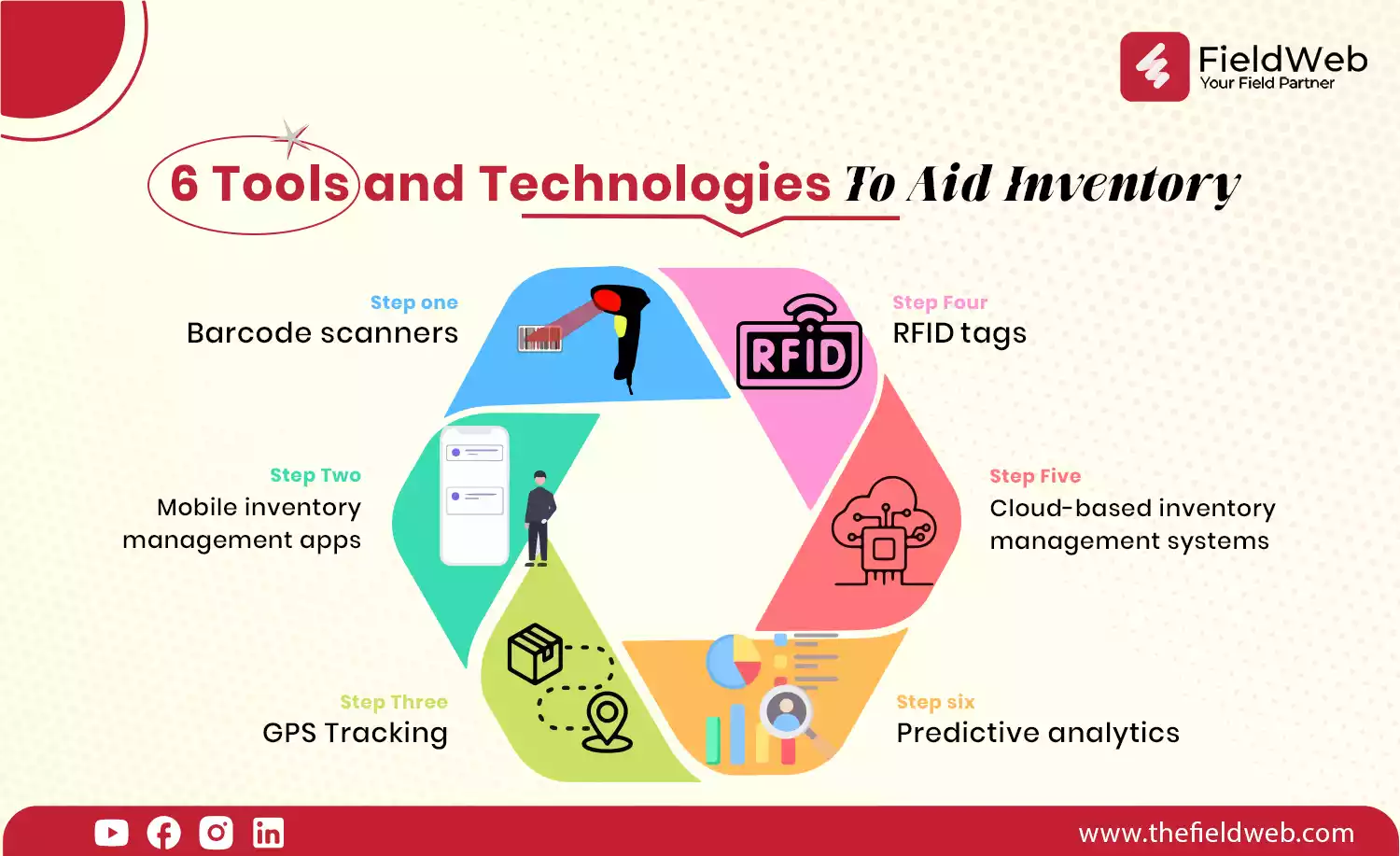
1. Barcode scanners: Barcode scanners can be used to track inventory levels and movements quickly and accurately. Technicians can scan items as they are used, allowing businesses to keep inventory in real-time.
2. Mobile inventory management apps: Inventory levels can be tracked across multiple job sites using mobile inventory management apps. Technicians can use the app to quickly search for parts and materials, as well as place orders for inventory restocking.
3. GPS tracking: GPS tracking can be used to locate service vehicles and assets. This can assist businesses in quickly locating parts and materials needed for a job.
4. RFID tags: RFID tags can be used to track inventory and movement. With handheld readers, technicians can quickly scan items, allowing businesses to maintain accurate inventory levels.
5. Cloud-based inventory management systems: Businesses can track inventory levels in real time from anywhere using cloud-based inventory management systems. This is especially useful for field service companies that must manage inventory across multiple job sites.
6. Predictive analytics: Forecasting demand and optimising inventory levels can be accomplished with predictive analytics. Businesses can use data and analytics to make informed decisions about when and how much inventory to reorder.
Field service businesses can improve efficiency, cut costs, and increase customer satisfaction by utilising these tools and technologies. It is, however, critical to select tools and technologies that are specifically designed to meet the needs of field service businesses. Businesses should assess their inventory management requirements and select tools and technologies that are simple to use, scalable, and provide the features and functionality required to manage inventory effectively.
It is critical to track key performance indicators in order to assess the effectiveness of inventory management in field service businesses (KPIs). Businesses can identify areas for improvement and make informed decisions about how to optimise inventory management processes by monitoring KPIs. Here are some key performance indicators (KPIs) that field service companies can use to assess inventory management performance:
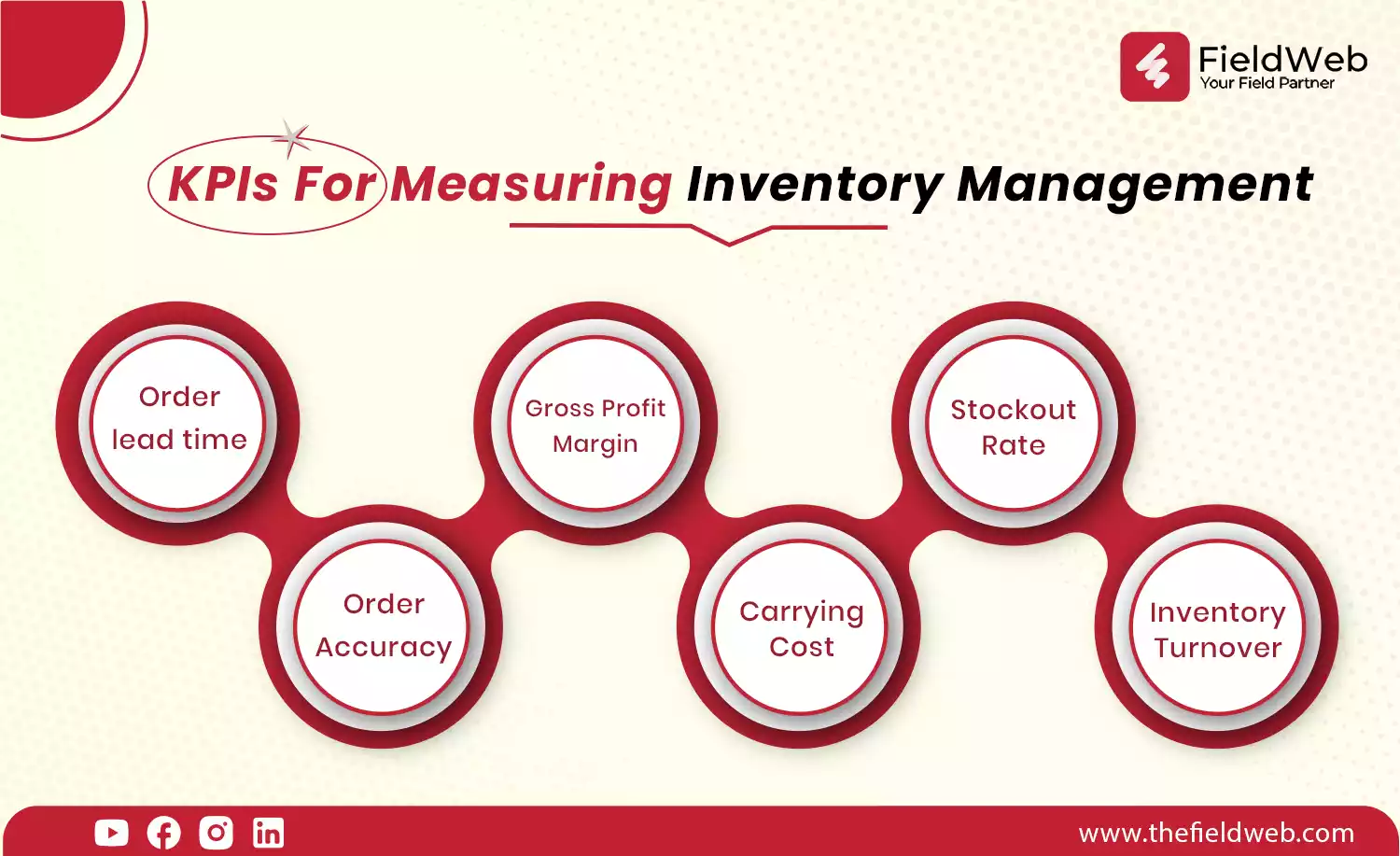
1. Inventory turnover: Inventory turnover measures how quickly a business is selling inventory and restocking it. A high inventory turnover indicates that inventory is being managed efficiently, while a low inventory turnover may indicate excess inventory or poor inventory management practices.
2. Stockout rate: Stockout rate measures the percentage of times that inventory is not available when needed. A high stockout rate can lead to delays and decreased customer satisfaction, while a low stockout rate indicates that inventory is being managed effectively.
3. Carrying cost: Carrying cost measures the cost of holding inventory, including storage, insurance, and taxes. A high carrying cost can indicate excess inventory or poor inventory management practices.
4. Order lead time: Order lead time measures the time it takes to receive inventory after placing an order. A long lead time can lead to delays and increased costs, while a short lead time can help businesses to manage inventory more efficiently.
5. Order accuracy: Order accuracy measures the percentage of orders that are fulfilled correctly. A high order accuracy rate indicates that inventory is being managed effectively, while a low order accuracy rate can lead to increased costs and decreased customer satisfaction.
6. Gross profit margin: Gross profit margin measures the profitability of a business, taking into account the cost of goods sold. A high gross profit margin indicates that inventory is being managed effectively and that the business is generating profits.
By monitoring these KPIs, field service businesses can gain insights into the effectiveness of their inventory management processes and make informed decisions about how to optimise inventory management to improve efficiency, reduce costs, and enhance customer satisfaction.
Field Service Management (FSM) software can play a crucial role in inventory management for field service businesses. FSM software is designed to streamline operations and automate processes, allowing businesses to optimise inventory management practices and improve efficiency. Here are some ways in which FSM can support inventory management for field service businesses:
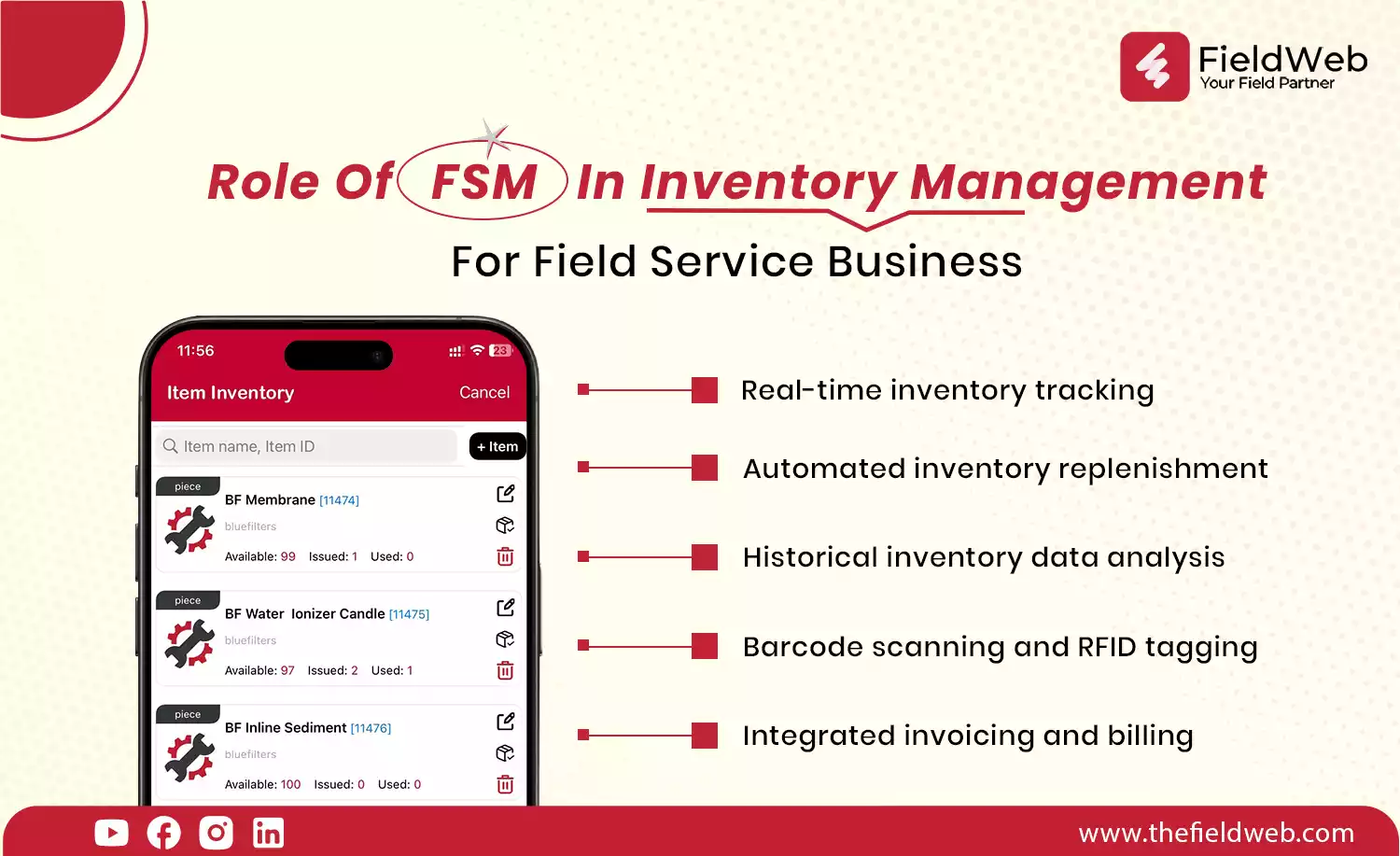
1. Real-time inventory tracking: FSM software can provide real-time tracking of inventory levels across multiple job sites, allowing technicians to quickly search for parts and materials and place orders for restocking inventory. This can help businesses to maintain accurate inventory levels and avoid stockouts.
2. Automated inventory replenishment: FSM software can automate the process of inventory replenishment by setting reorder points and generating purchase orders when inventory levels fall below a certain threshold. This can help businesses to avoid excess inventory and minimise stockouts.
3. Historical inventory data analysis: FSM software can provide historical inventory data that can be used to forecast demand and optimise inventory levels. Businesses can use this data to make informed decisions about when to reorder inventory and how much to order.
4. Barcode scanning and RFID tagging: FSM software can integrate with barcode scanners and RFID tags, allowing technicians to quickly scan items and track inventory movements in real-time. This can help businesses to maintain accurate inventory levels and reduce the risk of loss or theft.
5. Integrated invoicing and billing: FSM software can integrate with invoicing and billing systems, allowing businesses to track inventory costs and ensure that customers are accurately billed for parts and materials used during a service call.
By utilising FSM software to streamline inventory management processes, field service businesses can improve efficiency, reduce costs, and enhance customer satisfaction. FSM software can provide businesses with the tools and insights needed to effectively manage inventory and optimise inventory management practices.
Effective inventory management is crucial for field service businesses to optimise operations, reduce costs, and enhance customer satisfaction. With the challenges that field service businesses face in managing inventory across multiple job sites and service calls, Field Service Management (FSM) software can provide a solution to automate processes and streamline operations.
FSM software, such as FieldWeb, offers businesses real-time inventory tracking, automated inventory replenishment, historical inventory data analysis, barcode scanning and RFID tagging, and integrated invoicing and billing. FieldWeb is designed specifically for field service businesses, and it provides a wide range of features to help manage inventory, service scheduling, dispatch, technician management, and customer management.
By utilising FSM software like FieldWeb, field service businesses can optimise inventory management practices and achieve greater efficiency, cost savings, and customer satisfaction. The integration of FSM software into inventory management practices can streamline operations, improve inventory accuracy, and reduce the risk of stockouts and overstocking.
In conclusion, inventory management is a critical aspect of field service businesses, and utilising FSM software such as FieldWeb can provide businesses with the tools and insights needed to effectively manage inventory and optimise inventory management practices. By doing so, businesses can improve their operations and deliver better service to their customers.